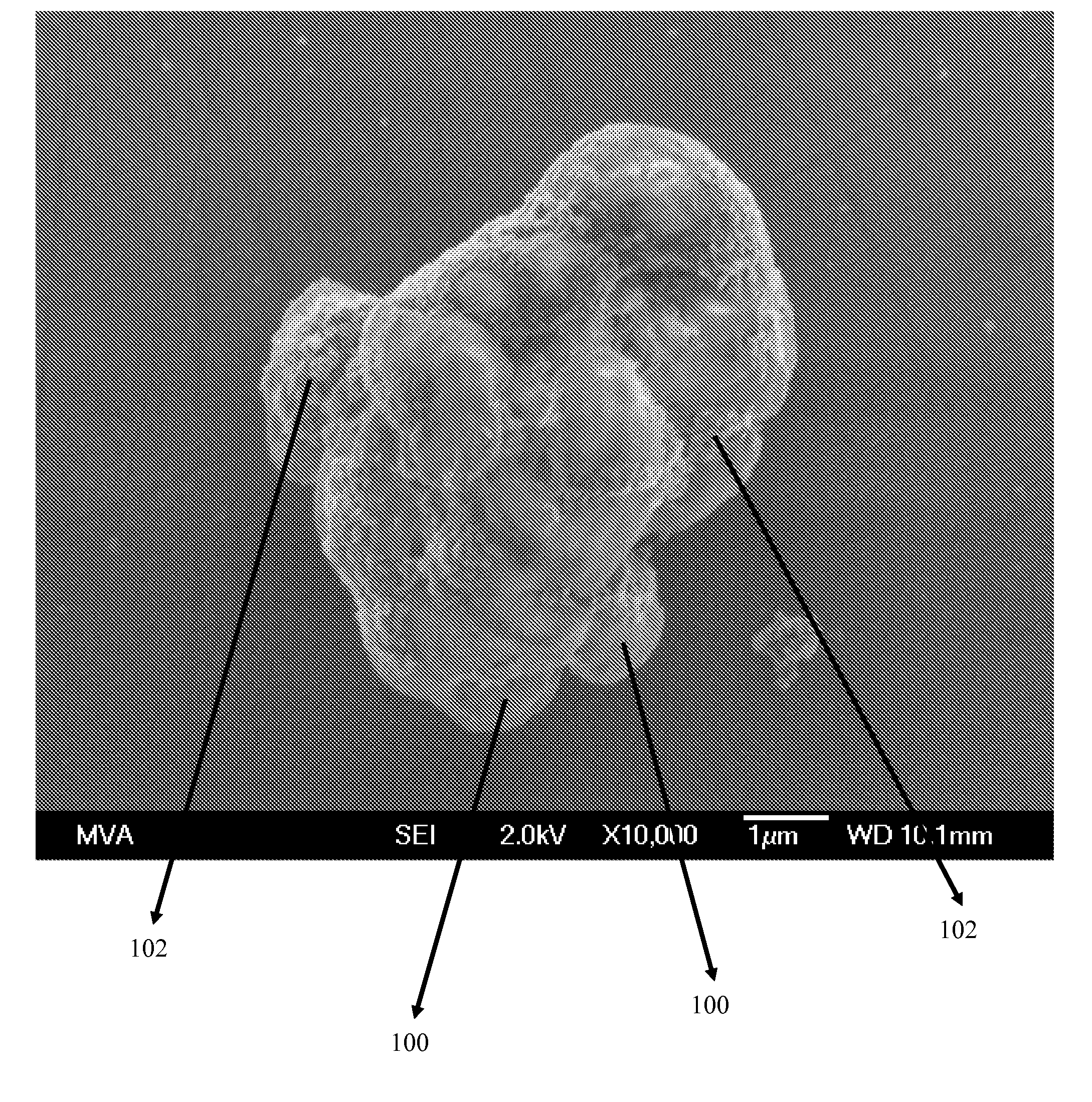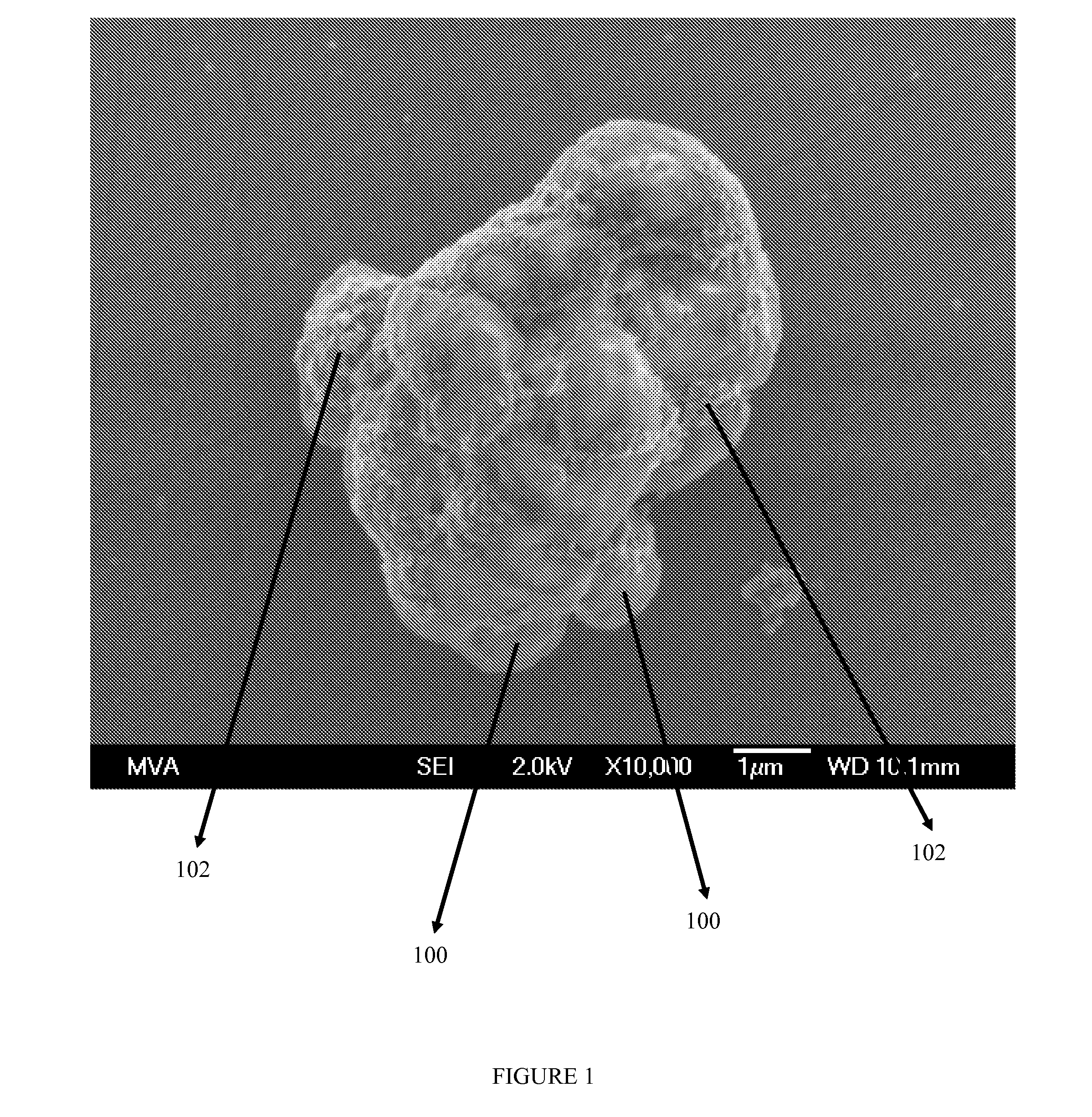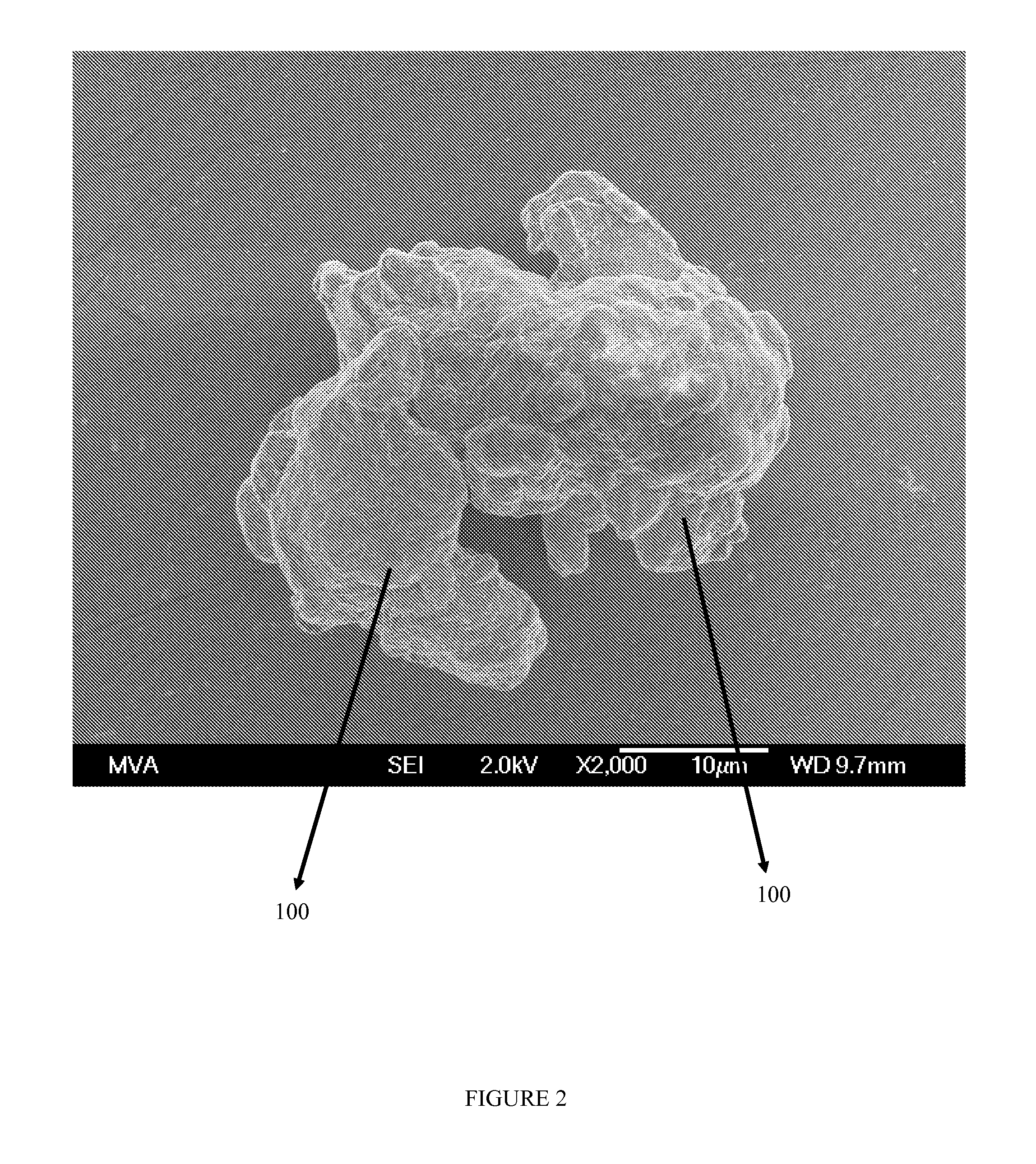Composite PTFE Materials and Applications Thereof
- Summary
- Abstract
- Description
- Claims
- Application Information
AI Technical Summary
Benefits of technology
Problems solved by technology
Method used
Image
Examples
example 1
Composite Particles Comprising a PTFE Component and a Carbonaceous Component
[0066]A mixture of PTFE particles (PTFE component) and carbon black (carbonaceous component) was obtained from 3M (St. Paul, Minn.) under the trade designation Dyneon. The PTFE-carbon black mixture comprised 1.2 weight percent carbon black particles. Consistent with FIG. 1, the carbon black resided on the exterior surfaces of the PTFE particles. The PTFE-carbon black mixture was placed into a flat mold having an area of 600 mm×700 mm and heated to a temperature of 340° C. for about two hours under ambient pressure. The mold was subsequently cooled to room temperature and the black PTFE slab was removed from the mold. The black PTFE slab was ground to form composite particles having an average size of about 60 μm. Consistent with the composite particles shown in FIG. 2, the carbon black was fused into and dispersed throughout the PTFE particles as described herein.
example 2
Membrane Comprising a Plurality of Sintered Composite Particles
[0067]The composite particles of Example 1 were placed into a pressure mold as described in U.S. Pat. No. 5,514,231 at a pressure of about 60 bar. The mold was heated to 360° C. for about 8 hours. The mold was subsequently cooled to room temperature and a sintered porous composite black PTFE cylinder was removed from the mold. A composite membrane was prepared by skiving the cylinder. The sintered composite black PTFE membrane had an average pore size of 5 μm. The average pore volume of the membrane was about 40%. The membrane had a spectral reflectance of less than 20%.
example 3
Membrane Comprising a First Surface and a Second Surface
[0068]A PTFE membrane comprising a white surface and a black surface was constructed according to the following procedure. A white PTFE membrane was made in a similar manner to the black PTFE membrane by using the pure PTFE particles. The white PTFE membrane was laminated to the sintered black composite PTFE membrane of Example 2 by providing a polyamide based adhesive fabric between the white and black PTFE membranes. The resulting structure was subsequently heated to a temperature of 130° C. under pressure to produce a unitary membrane comprising a white side having a spectral reflectance greater than 90% and a black side having a spectral reflectance of less than 20%. The membrane had an average pore size of 5 μm. The average pore volume of the membrane was about 40%.
PUM
| Property | Measurement | Unit |
|---|---|---|
| Temperature | aaaaa | aaaaa |
| Temperature | aaaaa | aaaaa |
| Pore size | aaaaa | aaaaa |
Abstract
Description
Claims
Application Information
 Login to View More
Login to View More - R&D
- Intellectual Property
- Life Sciences
- Materials
- Tech Scout
- Unparalleled Data Quality
- Higher Quality Content
- 60% Fewer Hallucinations
Browse by: Latest US Patents, China's latest patents, Technical Efficacy Thesaurus, Application Domain, Technology Topic, Popular Technical Reports.
© 2025 PatSnap. All rights reserved.Legal|Privacy policy|Modern Slavery Act Transparency Statement|Sitemap|About US| Contact US: help@patsnap.com



